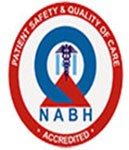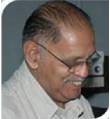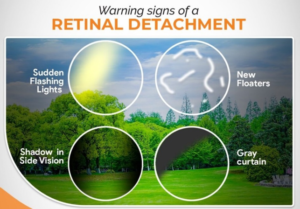Pediatric Ophthalmology
- Home
- Pediatric Ophthalmology
Examining and treating children requires special skills and calls for specific training, knowledge and equipment. At Sankar Foundation, we have trained staff and equipment to diagnose and treat children’s eye problems.


Eye Problems in Children
Refractive Error
Refractive Error is the most common eye problem found among children.
- Nearsightedness (myopia) makes far-away objects look blurry
- Farsightedness (hyperopia) makes nearby objects look blurry
- Astigmatism can make far-away and nearby objects look blurry or distorted

Myopia
Symptoms of myopia include:
- Complaints of blurry vision (like not being able to see the board in school)
- Squinting to try to see better
- Frequent eye rubbing
- Frequent headaches
- Hyperopia

Hyperopia
Symptoms of Hyperopia
- Headaches or fatigue after near vision activities, such as reading, writing, or computer use
- Eye strain caused by squinting or other accommodations to keep images and objects in focus
- Images or objects appearing blurry at close distance, while distance vision remains clear
- Holding material like books, a mobile phone or tablet at arm’s length
- Inward eye turn when trying to focus
our services
Treatment Types
- Eye test
- Prescription for glasses
- Eye surgery for squint, blocked tear ducts, retinal problems
- Lazy Eye
- Allergic Problems
- Eye injuries
- Prescribe eyeglasses and contact lenses
- Infections
- Foreign body in eye.
Symptoms of Astigmatism
- Sensitive to Light, Squinting, Eye Rubbing, Reading books too close.
If your child seems sensitive to lights, he has probably developed astigmatism.
Eye rubbing is a sign of tired eyes, and if you see your child rubbing their eyes, this indicates eyestrain. Encourage your child not to rub their eyes as this causes damage to the eye and its surrounding tissues.
Sometimes kids use their own vision correction methods, such as squinting eyes or covering an eye, to focus on something. If you notice your child squinting while watching television, reading, or even just looking at something from a distance, consult an eye doctor.
The print of book could appear blurry to a child with astigmatism, forcing them to move closer to the object
Other Eye Problems in Children
Amblyopia is when vision in one or both eyes does not develop properly during childhood. It is sometimes called lazy eye. Amblyopia is a common problem in babies and young children.
A child’s vision develops in the first few years of life. It is important to diagnose and treat amblyopia as early as possible. Otherwise, a child with amblyopia will not develop normal, healthy vision
Retinopathy of prematurity (ROP) is an eye disease in some premature babies born before 31 weeks. (A full-term pregnancy is about 38–42 weeks.) It is a problem that affects the tissue at the back of the eye called the retina.
India: 3 519 100 pre term babies. Babies with a birth weight of less than 1700 grams or those born under 35 weeks of pregnancy are most likely to have ROP.
Strabismus (crossed eyes) is a common eye condition among children. It is when the eyes are not lined up properly and they point in different directions (misaligned). One eye may look straight ahead while the other eye turns in, out, up, or down. The misalignment can shift from one eye to the other.
Identify Eye Problems in Children
A child’s ability to see develops rapidly in the first months and years of life. One can notice very early that babies use their eyes to locate people and objects. Since a child will not be able to identify its own eye problem if any, parents should be alert to any unusual eye behaviour and seek an eye examination at the earliest.
Early treatment is the key. A delay or seeking a proper diagnosis could permanent vision loss later. It is suggested that all children must have their vision checked within the first three to four years of their life and at the time of school admission, screening a school.












 Smt. K. Mani Mala is a postgraduate holding an MBA. She started her career as a founder faculty of one of the first management colleges in Visakhapatnam, viz. Indian Institute of Advanced Management. She worked with East India Petroleum Limited as its first employee and as Executive Assistant to the Managing Director. She was also associated in establishing the Joint Venture with M/s SHV Energy of Netherlands as General Manager (MIS). During her tenure she was also associated with other group companies such as 16 MW & 450 MW gas-based power projects in AP and 16 MW & 100 MW hydel power plants in Himachal Pradesh.
Smt. K. Mani Mala is a postgraduate holding an MBA. She started her career as a founder faculty of one of the first management colleges in Visakhapatnam, viz. Indian Institute of Advanced Management. She worked with East India Petroleum Limited as its first employee and as Executive Assistant to the Managing Director. She was also associated in establishing the Joint Venture with M/s SHV Energy of Netherlands as General Manager (MIS). During her tenure she was also associated with other group companies such as 16 MW & 450 MW gas-based power projects in AP and 16 MW & 100 MW hydel power plants in Himachal Pradesh.
 ( Late) Dr. Kumar studied Law and Economics at the Andhra University, Visakhapatnam and Chennai. He was a Chartered Accountant of repute with offices in Visakhapatnam, Hyderabad and Chennai.
( Late) Dr. Kumar studied Law and Economics at the Andhra University, Visakhapatnam and Chennai. He was a Chartered Accountant of repute with offices in Visakhapatnam, Hyderabad and Chennai.